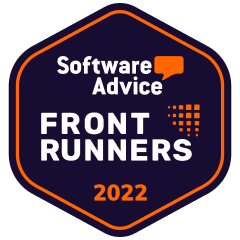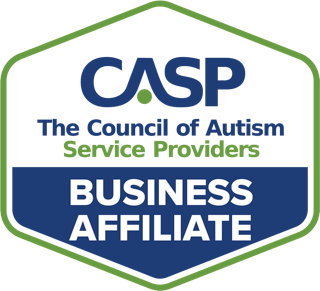Whether you’re starting a new ABA therapy business or you’ve had one for a while, it’s tempting to default to paper or pencil when documenting things such as billing. It was originally the only way and can seem like the simplest way to keep track of things during the moment. The truth however is that it can cause lots of issues for your business.
In order to become more scalable and to avoid being overwhelmed over time, you’re going to want to enter the modern age of billing with automation. Technology will improve your processes, relations with clients and vendors, and ultimately be what you need to help your business grow and find more success in the 21st century.
In this blog post, we’re going to look at five tips to help you move away from manual or pencil & paper billing to automated billing. By the time you’re done reading, you’ll wonder why you’ve been using an eraser regularly in 2023!
1. Audit Your Software, Systems and Processes
An integral component of automating your billing processes is having a solid EMR system to support your business. This will allow you to securely store client’s PHI and access online scheduling.
With systems that allow scheduling, this will help automate the billing process by accessing data connected to the scheduler which will flow into your billing system to generate claims, according to services scheduled/rendered.
Analyze the amount of time currently being spent on manually billing for your funders and apply a dollar value to that time – consider items such as looking up patient demographic information, calculating service units, adding pertinent claim information onto your form, time spent keying into payer portals, etc.
Many funders are also forcing providers to use electronic options for claim submissions, or they are adding fees for acceptance of paper claims which should be considered when looking into your ABA billing options.
Lastly, analyze your current processes for manual billing – how are you tracking billing compliance with each of your funders, what are your audit procedures, how are you tracking claim reconciliation? These should all be considered when reviewing the RCM (revenue cycle management) processes.
2. Look for an Automated Billing Solution Integrated with a Clearinghouse
Most EMR systems will have either a built-in billing module or a connection to a billing system that will allow for electronic claim submissions and tracking. Attend demos for these systems to help determine the system that will best suit the needs for your business and will allow you to manage your revenue cycle effectively and efficiently.
Important qualities to look for when determining a billing system include:
- Process automation
- Clearinghouse connection & payers available through that clearinghouse
- Ability to handle unique billing scenarios for complex payor requirements
- Reporting (full visibility into key functional areas – denials, under/over payments, contract rate comparisons, etc.)
- Denial and general A/R management and tracking
- Easy ERA connections for payment posting
- Patient billing features (electronic statement options, ability to pay online, etc.)
Take Rethink’s Billing Quiz
3. Assign an Owner to Manage the New Billing Process
The person managing the billing process should be the point of contact during implementation of the new system and should be ready to fully learn the system before anyone else in the organization.
This person will also be responsible for creating workflows and documentation on processes established by your business. They should be prepared to create training documents on the system related to billing as it pertains to your business.
4. Create Standards Across Your Organization
Now comes the fun part! It’s time to sit down once you have access to your system and document the normal workflow from A>Z. This is such a critical piece when starting out in the event someone else needs to cover or you grow your team, and includes creating SOPs (standard operating procedures) that outline steps to take within the system to manage the full RCM process.
Recommendations are to break down the revenue cycle into each separate component and then start creating workflows from there. Examples of this include:
- Patient intake procedures & documentation of billing information
- Verification of benefits
- Authorization Documentation/Tracking
- Incomplete/Un-verified Appointment Reporting
- Claims Auditing/Claims Scrubbing (Initial Billing)
- Rejection Management
- Payment Posting
- Denial Management
- Patient Billing
- Audit Procedures (Unbilled charges, payments, etc.)
- Reporting
Once you have created the SOPs for each functional area, it’s also important to start looking at your billing schedule for the Initial Billing process above. A few things to think about:
- When are staff required to sign off on sessions if using an integrated scheduling system?
- How frequently will you be billing? Daily, weekly, bi-weekly? Will you have a set day where you will dedicate to auditing and generating your claims through the system?
- When and how frequently will you follow up on any rejections from the clearinghouse?
- When and how frequently will you be posting payments that come through your clearinghouse? Weekly, daily, etc.?
- How much time will you dedicate to general A/R management?
- What does your reporting schedule look like? Weekly or monthly reporting?
You will then also want to start thinking about audit procedures once you have established normal operating procedures to ensure all staff remain compliant with the guidelines established above. These will include various checks and balances put into place by your organization to assure all steps are being followed for revenue efficiency.
- How are you auditing your payments that are getting posted? Are you reconciling against your bank statements and at what frequency is this occurring?
- Are you monitoring under/overpayments? Does your system have the capability to report this back to you?
- Spot checks with billing to assure payor compliance is being met
- Unbilled audits to assure all sessions were captured and billed through the system
5. Determine Measures of Success by Implementing KPIs and Reviewing Your Time Savings Analysis
There are several known KPIs within the RCM industry that you can report on to compare/benchmark to determine revenue efficiency. An ideal billing system will have multiple reports available for you to run to gather the bulk of the information needed below for calculations.
A few of these KPIs are outlined below along with the industry benchmark to compare against:
DRO (Days in Revenue Outstanding)
- This indicates your overall revenue cycle efficiency.
- Calculation = Divide the total accounts receivable by the average daily charges. The result is your DRO.
- 50+ days is standard – healthy DRO is 35-45 days
Net Collection Rate
- This measures how effective your practice is at collecting reimbursement for services rendered.
- Calculation = total payments divided by total net charges (charges less any approved write offs)
- >95% is standard
Rejection Rate
- This helps measure proper coding and compliance with payor standards/expectations.
- Calculation = Total number of rejected claims divided by the total claims filed within a given period.
- 5-10% is standard
Denial Rate
- This is your ability to comply with payor requirements to enable accurate claim payment, and relates directly to your claims scrubbing/auditing process above.
- Calculation = Total dollar amount of claims denied by payers within a given period divided by the total dollar amount of claims submitted within the given period of time.
- 5-10% is standard
Total A/R Over 90 days
- This indicates revenue cycle effectiveness at collecting against your A/R.
- Calculation = Divide total dollar value of AR greater than 90 days old by dollar value of total A/R
- <25% is standard – healthy indicator is below 15%
To summarize, improving automation is key to overall business success, especially when it comes to back-office functions for ever-growing organizations. There is a lot that goes into converting from manual billing to automated billing through an integrated system and those factors should be considered in your analysis, along with cost savings and time savings.
Your revenue cycle management tools and resources are key to business success. If you do not have the necessary tools or resources to dedicate, consider outsourcing as an option while growing your business.










